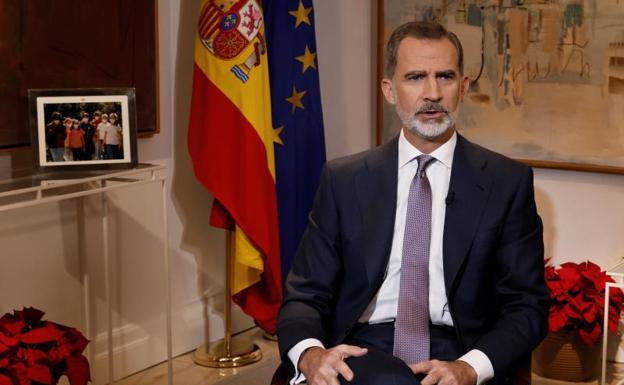British and Spanish royals, relatives in dispute over the ‘inheritance’ of Gibraltar
Although the Spanish royal family have always been affectionate to “cousin Lilibet”, the Rock has sometimes cast a shadow over their relationship
María Eugenia Alonso
Madrid
Friday, 9 September 2022, 10:37
In 1905 Spain's King Alfonso XIII set off on a tour of Europe which, among other purposes, was aimed at finding himself a wife. In London he thought he had found someone: Princess Patricia of Connaught, one of Queen Victoria’s grand-daughters. She turned him down. However, the grandfather of the present King Felipe of Spain did not go away empty-handed. He attracted the attention of Victoria Eugenia, who he married the following year. And that is the origin of the links between the two royal families: Queen Elizabeth II was the cousin of the king emeritus, Juan Carlos, and King Felipe’s aunt.
Victoria Eugenia brought with her from England the tradition of wedding cakes, amassed a splendid collection of jewellery – Queen Letizia wears some nowadays on big occasions – and introduced haemophilia into the Spanish monarchy, which gave her husband cause to distance himself from her and practically reject her altogether.
But “the only problem that remains between us” as Queen Elizabeth described it on the only State visit she made to Spain, in 1988, was and is Gibraltar. Those six square kilometres in such a strategic location have been a source of dispute between Spain and the UK for decades, between King Juan Carlos and Elizabeth II. To such an extent that the Spanish king and queen refused to attend the wedding of Prince Charles and Lady Diana Spencer in July 1981 once they learned that the royal couple planned to start their honeymoon from Gibraltar.
That was the most notable sign of discord, but not the only one over sovereignty of the Rock. In 2012 Queen Sofía cancelled her attendance at the celebration to mark 60 years of Queen Elizabeth’s accession to the throne, almost at the last minute. Why? Prince Edward, Elizabeth’s youngest son, and his wife visited Gibraltar on one of the tours that several members of the British family made to mark the occasion.
Affectionate relationshp
But the affection between the two families has been evident on many other occasions. In April 1986 King Juan Carlos and Queen Sofia made an official visit to the UK which marked the beginning of five years of excellent relations.
That summer and the one that followed, Charles and Diana spent several days with their sons William and Harry at Marivent, and in 1988 Spain welcomed the British monarch on a visit which will go down in history. Accompanied by Prince Philip, who was Greek by birth and second cousin to Queen Sofía, the most-photographed woman in history (as the chroniclers of the time informed us) visited Madrid, Seville and Barcelona.
In the Spanish parliament, Queen Elizabeth gave a speech in which she referred to the Spanish transition to democracy as “one of the brightest pages in your nation’s long and proud history”, which was greeted with several minutes of applause. Two years earlier, Juan Carlos had become the first monarch to address the British parliament.
The Queen never referred to Juan Carlos (he abdicated in 2014) as King Emeritus, because she believed a king was a king until the day he died, but his example was continued by his son, Felipe VI on a state visit with his wife Queen Letizia in July 2017.
It sealed the rapport between the two royal families, and today they are both in mourning.
Noticia Relacionada

